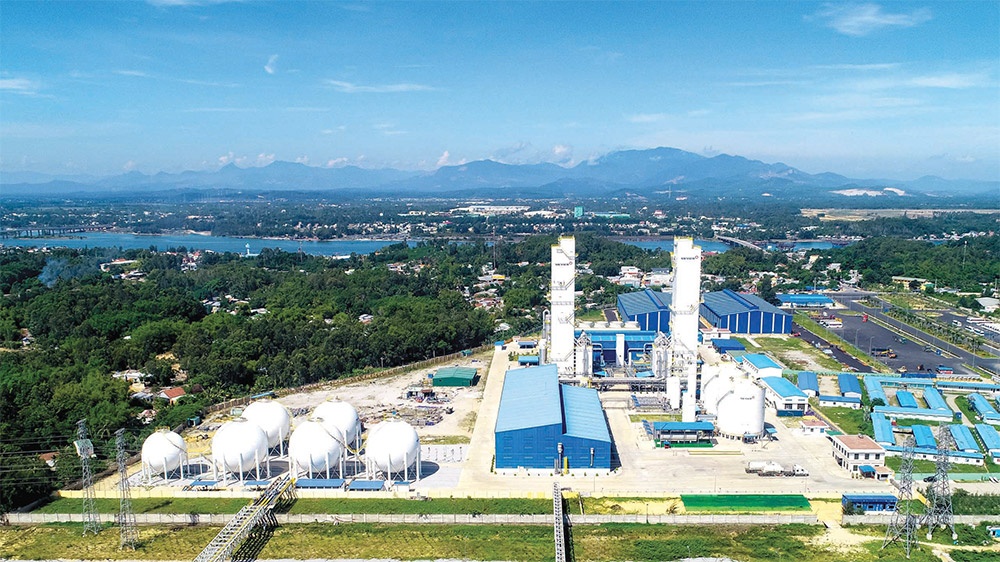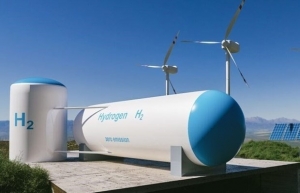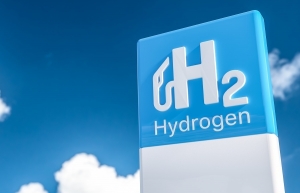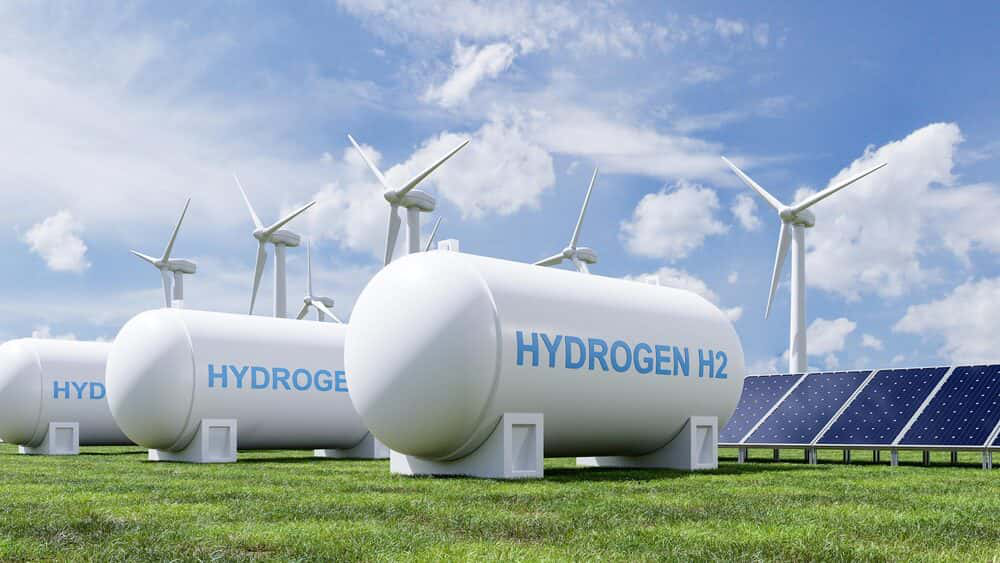Elements of a green hydrogen future
 |
| Patrick Haverman, deputy resident representative in Vietnam, United Nations Development Programme |
This economic growth is coinciding with increases in energy demand that require innovative solutions to ensure energy security. Though dependence on coal production is still expected in 2030, Vietnam has set commitments to stop building new coal-fired power plants after 2030. And since 2019, Vietnam has quadrupled its solar and wind capacity.
The successful delivery of targets such as net-zero by 2050 and the Just Energy Transition Partnership will entail a small but meaningful role from green hydrogen, which will grow in the coming years. Globally, green hydrogen from water electrolysis plays a small role, having contributed only 0.03 per cent of global hydrogen production in 2020. However, improving electrolyser technologies and falling renewable energy costs are poised to make green hydrogen cost competitive by 2030.
Crucially, countries with high renewable energy potential, preferential trade relationships, political stability, and proximity to major importers in the Asia-Pacific region, such as Vietnam, stand to benefit.
Green hydrogen has broad application uses, which include but are not limited to shipping, transportation, steel, fertilisers, and chemicals, many of which are sectors that are difficult to decarbonise. Its production and use remain a novel field in Vietnam, but the energy medium has garnered interest. Notably, Vietnamese company TGS Green Hydrogen is poised to build the country’s first electrolyser with an $840 million investment, signalling that efforts to build a cohesive national strategy must occur sooner than later.
Our joint study with the Institute of Energy study takes the preliminary steps to assess the potential role of green hydrogen production from water electrolysis, the use of green hydrogen for the purpose of reducing greenhouse gas emissions on a large scale, and accelerating the clean energy transition in Vietnam.
Preliminary findings include economic and statistical analysis using the most up-to-date data on domestic electricity and renewable electricity projections, utilising assumptions from the International Renewable Energy Agency, the International Energy Agency, and the Vietnam Energy Outlook.
These projects provide estimates of Vietnam’s current and future green hydrogen and ammonia demand, a discussion on the national policy and legislative framework for green hydrogen development, and compare against global developments both in use and policy.
To address the potential for hydrogen production from water electrolysis in Vietnam, there are three key elements from our findings. Firstly, to provide a realistic estimate of green hydrogen, three different scenarios were developed, based on a fully decentralised solar and wind generation, the provision of renewable electricity from a supply utility, and the mixed provision of grid electricity and some dedicated onshore wind and solar power.
Our findings highlight that, if the electrolysers run at 90 per cent capacity throughout the year, at least 11.49 million tonnes of green hydrogen could have been produced in 2020 and as much as 18.78 million tonnes could be produced by 2050.
Secondly, the levelised cost of hydrogen is projected to decline significantly in each of the three scenarios. The cost serves as a key metric to assess the costs to produce one kilogram of hydrogen, on average, over a specified period of time.
Here, the costs are projected to decline from as high as $11.81 per kilo at 65 per cent capacity to as low as $2.42 per kilo at 90 per cent capacity by 2050. The reduction in costs can be attributed to the rapidly declining costs in key input technologies such as storage batteries. Even after accounting for the rapid decline in costs over the coming decades, the costs are comparatively higher than the objectives set in other economies, as exemplified by the United States seeking $1 per kilo by the end of the decade.
Thirdly, it is important to highlight the important role played by governments in setting targets, developing strategies, regulation, and providing market-based incentives towards decarbonisation. As a major challenge, the global development of legislation, standards, and trade rules on hydrogen remains in the early stages.
Many countries have opted for stop-gap measures to ensure a robust investment environment which can first be developed, driven by falling renewable energy costs and a reliance on existing fossil fuel regulation.
Among the 40 or so governments that have developed national hydrogen strategies, key actions include the pursuit of MoUs to advance cooperation on research and development, working groups to address harmonisation of standards and regulations, engagement in public-private partnerships, and information sharing on the development of secure value chains and guarantees of origin, among other activities.
 |
| Photo: Messer |
Industry investors must also be able to set technical targets for electrolyser production cost reductions based on capacity building, research and development, and appropriate sectoral applications.
Green hydrogen is considered a new generation energy source, and an optimal alternative energy source soon. The production of green hydrogen and energy carriers such as ammonia and renewable energy plants can partially meet Vietnam’s energy storage and consumption demand in transportation and other sectors. It can also help Vietnam achieve its net-zero commitments.
We will continue working with the Institute of Energy in green hydrogen production and use, as well as accelerating the green energy transition in Vietnam.
 | Conference held on green hydrogen development The first National Green Hydrogen Summit on energy transition and green hydrogen development in Vietnam on October 28 saw leaders, investors, and pioneers gather to discuss the future of green hydrogen. |
 | Vietnam hopes to promote energy transition from green hydrogen The green hydrogen ecosystem based on renewable energy is expected to contribute $40-$45 billion to Vietnam's GDP each year, according to the National Green Hydrogen Summit on October 28. |
 | Suitable policies, mechanisms needed for green hydrogen development Vietnam needs to promptly adopt appropriate policies and mechanisms to build infrastructure and value chains related to hydrogen, experts recommended at the National Green Hydrogen Summit: Energy Transition and Development of Green Hydrogen Industry in Vietnam on October 28 at the National Innovation Centre (NIC) at the Hanoi-based Hoa Lac Hi-tech Park. |
 | Green hydrogen market pursued Promoting a green hydrogen ecosystem has the potential to annually contribute over $40 billion to GDP and generate over 40,000 jobs for the Vietnamese economy. |
 | Honeywell teams up with The Green Solutions Group Corporation for Vietnam's first green hydrogen plant On February 21, US industrial giant Honeywell announced that it has signed a MoU with The Green Solutions Group Corporation (TGS) for the Tra Vinh Green Hydrogen Project, Vietnam's first green hydrogen plant in the Mekong Delta. |
What the stars mean:
★ Poor ★ ★ Promising ★★★ Good ★★★★ Very good ★★★★★ Exceptional
 Tag:
Tag:
Related Contents
Latest News
More News
- Global partnerships key to Vietnam’s IFC development (December 26, 2025 | 16:18)
- Vingroup pulls out of bid to invest in North-South high-speed railway (December 26, 2025 | 11:42)
- Strengthening supply chains through trade promotions and customs reform (December 24, 2025 | 14:00)
- PM orders investment model for North–South high-speed rail (December 22, 2025 | 17:43)
- LS Eco Energy to invest in Vietnam rare earth sector (December 22, 2025 | 17:31)
- Government moves to establish International Financial Centre (December 21, 2025 | 21:00)
- Vietnam's IFC to target global investment flows (December 21, 2025 | 18:00)
- Two national hospitals expand capacity with new facilities (December 20, 2025 | 09:00)
- Ha Tinh breaks ground on major Vingroup industrial and energy projects (December 19, 2025 | 18:24)
- EVN launches major power infrastructure projects nationwide (December 19, 2025 | 18:17)























 Mobile Version
Mobile Version